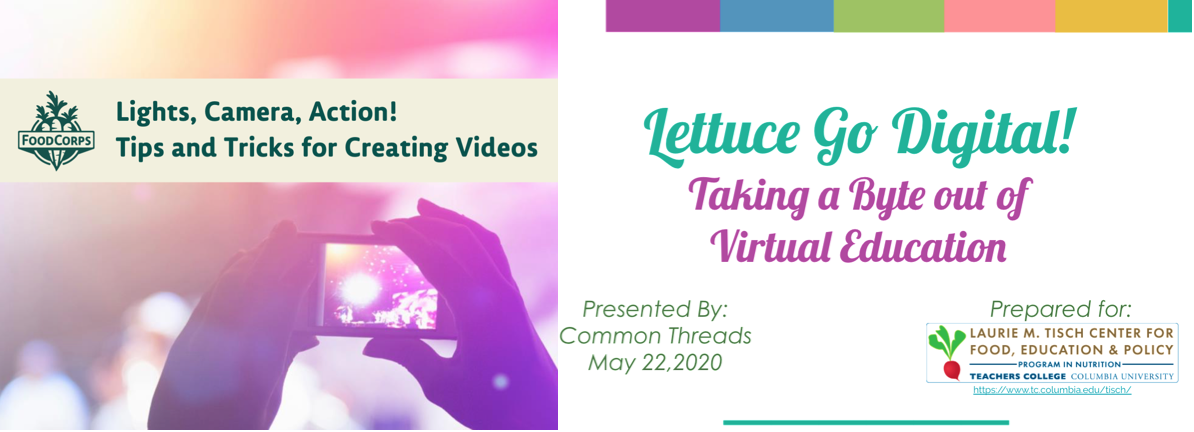The Tisch Food Center, Common Threads, and FoodCorps recently co-hosted a webinar on Delivering Digital Food and Nutrition Education Content During Covid-19. The webinar included tips on tailoring interventions to your audience, basic filming and video editing, and strategies for developing high-quality digital content during the COVID-19 pandemic. Here’s the top five lessons we learned from this webinar:
Keep it simple, short and specific.
When developing digital content during the COVID-19 crisis, make sure that your materials are simple and easy to use. During times of crisis, we have a limited capacity to take in new information. Information should be presented in a brief format and include action-oriented activities that your audience can readily implement.
Repurpose existing resources.
Existing resources that are relevant to the current context can be shared with your audience digitally. For example, recipes that use pantry staples would be appropriate to share during this time. To maximize efficiency, consider which of your materials are already digitized and can be easily shared in a digital space. Instead of creating new content, you may want to focus on adapting current resources.
Listen to your audience.
Make sure you continually check in with your audience. Ask your audience members how they are using your resources and what their needs are. It’s also important to understand what platforms they are using and to meet your audience where they are at. Embrace new tools and platforms! Finally, reach out to your partners to learn what types of technology they are using to share content with their community members.
When filming videos, preparation is key!
When filming a video, carefully select a lesson to film. Consider selecting a lesson that is hands-on and uses ingredients or supplies that your audience has at home. A key step in producing high-quality videos is creating a storyboard that outlines the details of your final product, including the video clips, audio files, and photos that you plan on incorporating. Planning what, when, and where you will film in advance will ensure the filming process is seamless.
It doesn’t have to be perfect.
Good content strategy does not stop when you hit post – engaging with your audience on the platform is just as important. Creating successful content is all about learning and improving. Ask yourself:
- What worked? What didn’t? Be patient, content creation is not easy.
- Experience your content as an audience member would and ask friends and colleagues to do the same.
- Repeat these steps, enjoy the process, and watch your online presence grow!
Additional resources, pesentation slides, and webinar recording:
- Delivering Food and Nutrition Content During COVID-19 Webinar Recording
- Tisch Food Center's presentation, Digital Toolkit, and E-learning Hub.
- Common Thread's presentation (Code for downloading posters can be found on slide 16)
- Food Corps' presentation and additional webinars:
- “Lights, Camera, Action: Tips and Tricks for Recording Videos” — slides, webinar recording
- “Tips for Editing and Sharing Videos” — slides, webinar recording
- Resources and frequently asked questions
